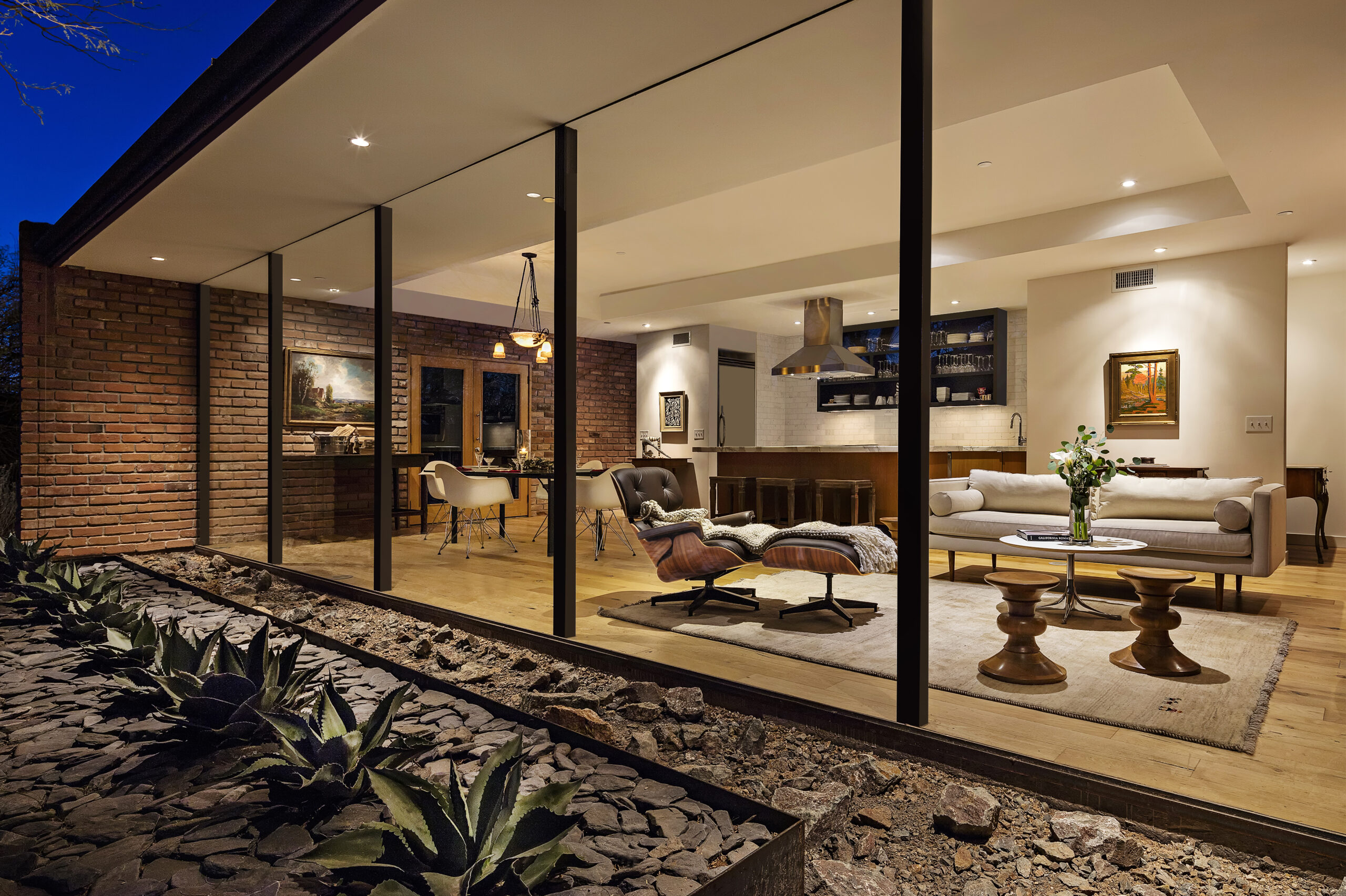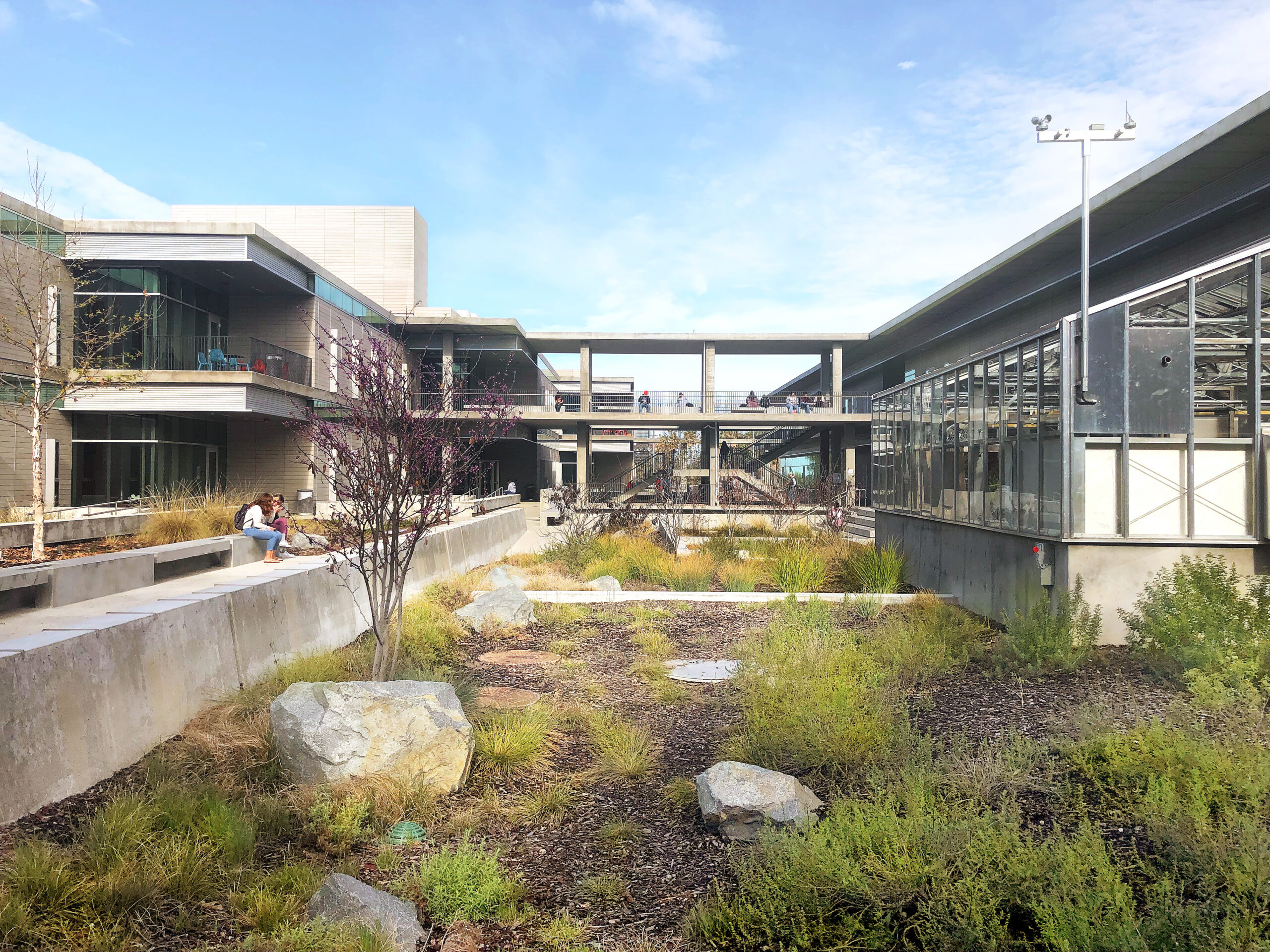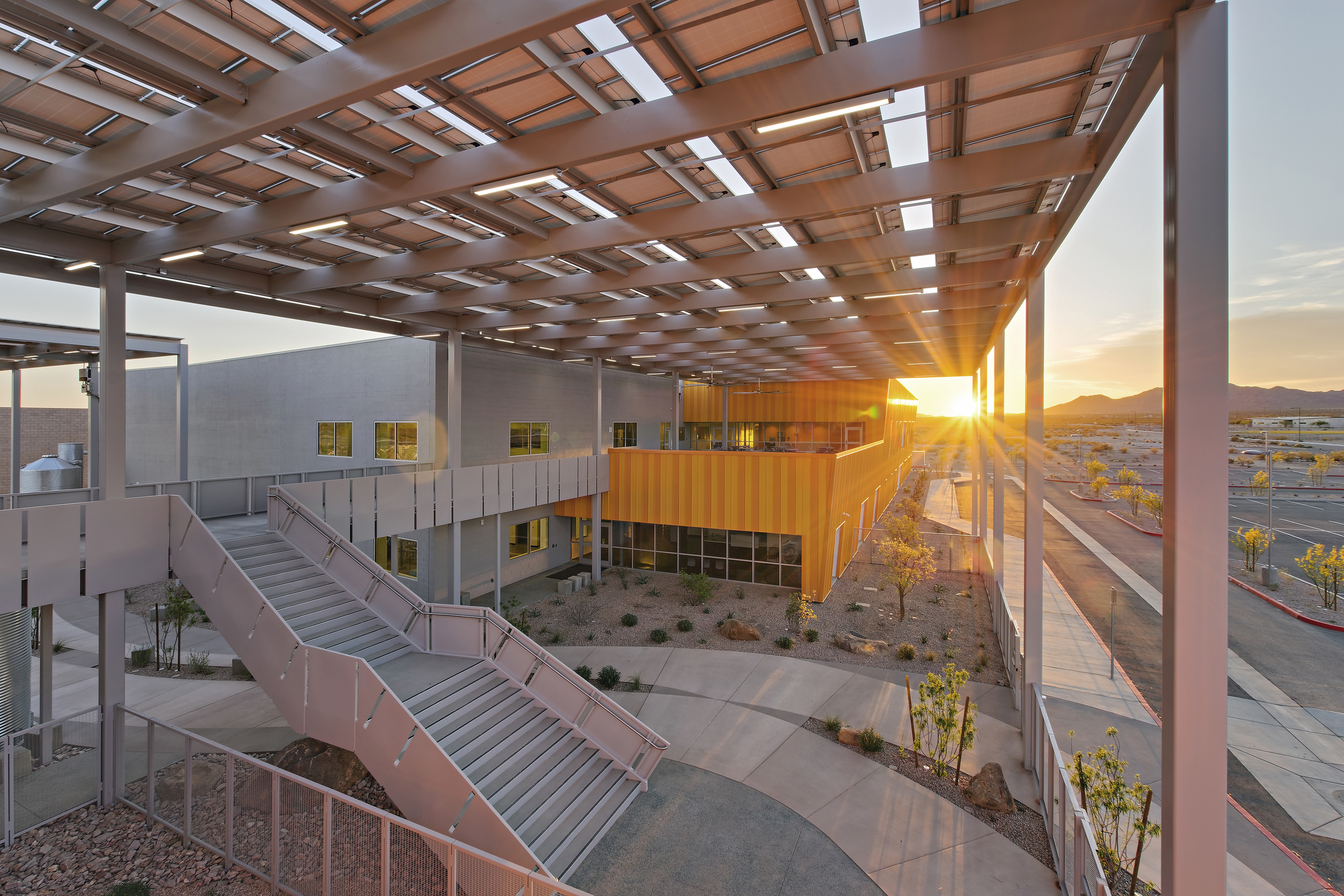Architectural sustainability is nothing new. However, several local firms are leading the charge when it comes to climate action and green building practices. Here, we speak with three architects leading the charge in Arizona.
 Clint Miller Architect
Clint Miller Architect
Architect Clint Miller has been developing his love of architectural design over the course of 40 years in the industry. “I love to draw house plans and render elevations,” he says. “It started in high school with a mechanical drafting class. There, I learned how to draw a stairway in a perspective view, and I have enjoyed the art of drawing ever since.”
Today, Miller focuses on contemporary residential architecture—with expertise in architectural illustration, historic architecture, interior design, and landscape architecture—all while keeping sustainability in mind. In fact, his decision to design and construct his family’s home with load-bearing adobe resulted in a 1998 Homes of the Year award from the Arizona Chapter of the American Institute of Architects. He has now designed many premier adobe homes across Arizona. While his projects span from Palm Springs to Santa Fe, and from low desert to higher elevation alpine environments, most of his work is in Carefree, Scottsdale, and Paradise Valley. He has designed more than 100 projects, with more than 20 in Arizona made ofadobe blocks and with varying degrees of green building practices. Carefree, 480.889.4660, http://clintmillerarchitect.com/index.php
Why is sustainability an important part of your practice?
“I believe we have a responsibility to be good stewards of the land. It is just as easy to make green choices as otherwise. Green building methods today are considered best practice.”
What are some specific ways that you integrate sustainability into your designs?
“Many of my home designs use authentic sun-dried adobe blocks as the structure (not a veneer) and are exposed as the final finish. It is, importantly, good for energy conservation and [also] renewable, via soil from the earth that makes up the adobe blocks.”
What are some trends in sustainable design that you are noticing?
“Water harvesting from rooftops and gray water systems, plus advancements in building insulation and high-performance glass designed to reduce solar gain on the building.”
How do you personally practice a sustainable lifestyle?
“The home I designed for my family in Carefree, Arizona, is a repurposed mid-century design of a modest footprint. Due to its modest-but-efficient size, utility bills are kept at bay. We were able to retain many of the historic brick walls in the new construction. Thus, we were using materials existing onsite and not filling a landfill with brick. We also are mindful of packaging to the point of influencing the purchases we make. With careful recycling and composting, we have discontinued regular trash service and make short trips to the local dump with our minimal loads about every two to four weeks.”
 Marlene Imirzian & Associates Architects
Marlene Imirzian & Associates Architects
Marlene Imirzian & Associates Architects is known for design excellence, project performance, and leadership in the integration of sustainable design practices. Key to the firm’s approach is that each project addresses the larger context beyond its physical boundaries. This requirement addresses everything from user flow, future expansion, and flexibility of use, to connections with utilities and infrastructure, life-cycle cost, ease of maintenance, and sustainability. For Imirzian, it was an internship at an architectural office during high school that inspired her to become an architect. She has now worked as an architect for 25 years, and she opened her firm in 1997.
8906 N. Central Ave., Phoenix, 602.943.5279, https://imirzian-architects.com
Why is sustainability an important part of your practice?
“Sustainability is part of good design. It is important to consider in the development of the design, starting with our first concepts.”
What are your distinct green offerings?
“We are highly knowledgeable of efficient and effective ways to optimize sustainability, starting with building form and continuing with daylighting, reusable materials, and building performance to minimize energy use. We also have a highly collaborative design approach with our engineers to bring comprehensive sustainable concepts to our projects.”
What are some trends in sustainable design that you are noticing?
“Low water use is getting more attention, though it has always been an essential part of good sustainable design.”
How do you personally practice a sustainable lifestyle?
“Thinking about ways to not buy new makes a big impact.”
 DLR Group
DLR Group
DLR Group is 100 percent employee-owned, with offices around the globe. The firm designs commercial facilities, and, in the last decade, it has designed more than 100 high-performance buildings acrossthe country that are in various stages of achieving net-zero energy. In Arizona, DLR Group has designed the state’s first zero-energy certified educational building at West-MEC Southwest Campus, plus more than a dozen high-performance buildings that are operating in an energy-efficient manner.
DLR Group’s mission is to elevate the human experience through design. As part of that mission, the firm has five core values: commitment and sharing; fun and creativity; environmental stewardship; integrity and ownership; and teamwork. When it comes to environmental stewardship, DLR Group seeks to mitigate the impact that the Group has on the planet, whether that means reducing or offsetting resources. Prem Sundharam, applied research leader and interim global sustainability leader at DLR Group, leads a team that works to advance environmental stewardship and sustainable commitments supporting climate action. 6225 N. 24th St., Ste. 250, Phoenix, 602.381.8580, https://www.dlrgroup.com
Why did you want to become an architect, and what do you love the most about your career?
“The opportunity to shape an idea and learn about the world through the process of executing the idea. I love connecting dots between seemingly unrelated or mundane things and visualizing a bigger story and a better opportunity.”
Why is sustainability an important part of DLR Group’s practice?
“Buildings contribute to about 40 percent of U.S. greenhouse gas emissions, and addressing the building sector emission is mission-critical for every architect and the entire design community. As one of the largest design consultancy firms in the United States, sustainability is embedded in our culture, which positions us to tackle the toughest challenges in front of us with a heightened sense of urgency.”
How does DLR Group integrate sustainability into its designs?
“We first acknowledge that our clients are at various stages in their journey toward their own sustainability commitments, goals, and achievements. This position allows us to deeply listen to our clients’ values and align our tailored design solutions to their values. We also have committed to designing carbon-neutral buildings by the year 2030 across our entire global practice. For instance, we have invested in growing a highly specialized group of experts that can analyze future climate scenarios and advise our clients on sustainability strategies that bring the most return on the investment. As an integrated design practice (meaning ability to provide interdisciplinary design services), we are proud that we can advise our clients with their built environment from the conception to design and construction to lifelong operations with the following sustainability related services: holistic vision and goal setting; high-performance design; renewable energy and storage; and smart building services that include commissioning, sensor-based space analytics, and portfolio management.”
What are some trends in sustainable design that you are noticing?
“Holistically addressing sustainability not only from resource conservation but also related to building user-behavior awareness, human health, community health, and the larger ecosystem health is a perspective that is gaining momentum as design solutions for buildings can extend way beyond into the governance, policies, and operations of our clients’ organizations. Another area that is gaining more attention is toward adaptation and resilience. There are two sides to climate action: mitigation and adaptation. The design industry has long focused on the mitigation side, meaning reducing the building’s impact on the environment and contribution toward climate change. Adaptation is the other side of this equation that is getting more attention. So sustainable design is beginning to acknowledge that disruption from natural- and climate-induced events will occur and therefore identify strategies that will allow our clients to adapt and thrive.”
How do you personally practice a sustainable lifestyle?
“Buying less, eating less meat, local shopping, reducing online orders, and reducing dairy intake are some personal choices I have focused on lately. Transportation is the biggest contributor to my carbon footprint. I have been tackling that with electric cars for more than eight years and reduced frequency of flights, preferring to video conference over flight trips. I urge everyone to have a sense of urgency toward climate action. We are running out of time, and, while every little bit of action counts, the biggest effect is going to be from policy. There is some incredible momentum toward climate action with President Biden’s Bipartisan Infrastructure Law and the Inflation Reduction Act. I encourage everyone to learn about them and leverage them to their benefit.





